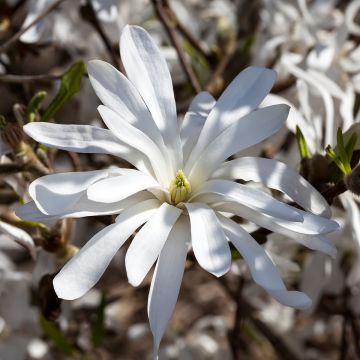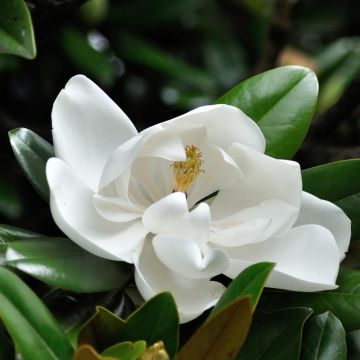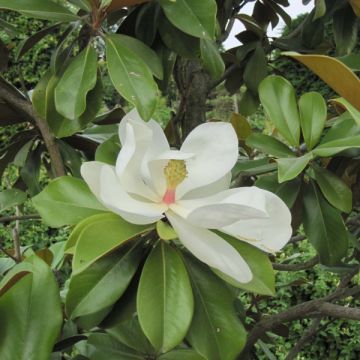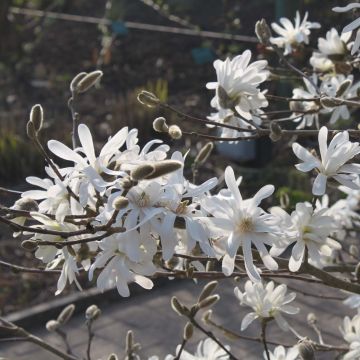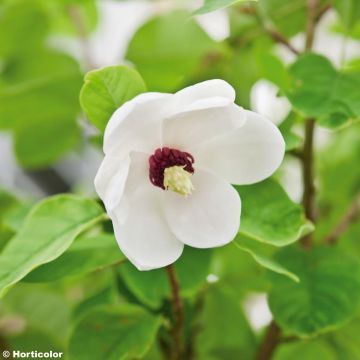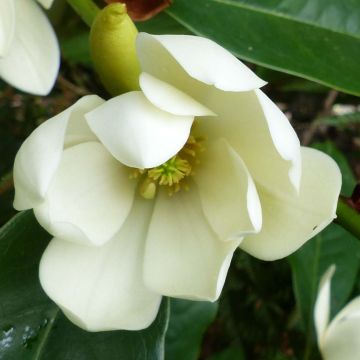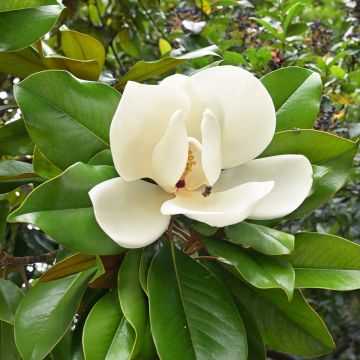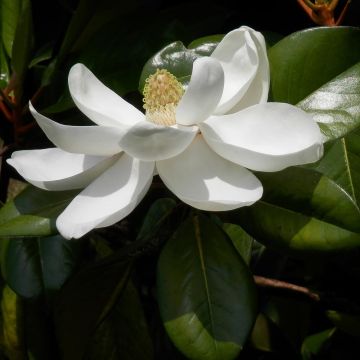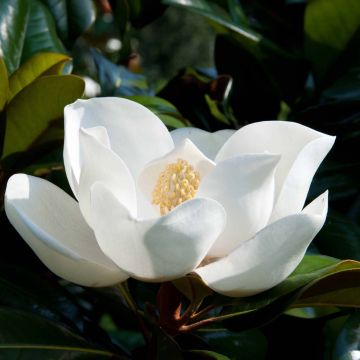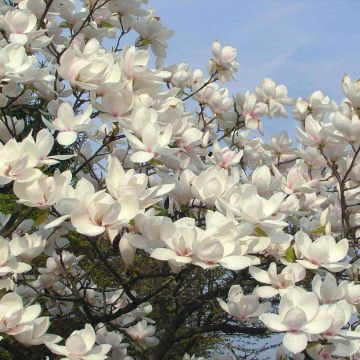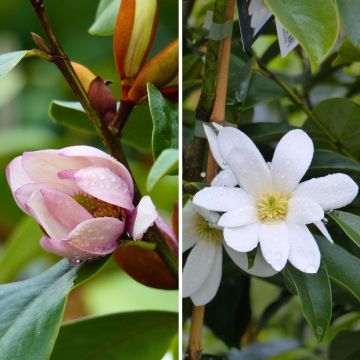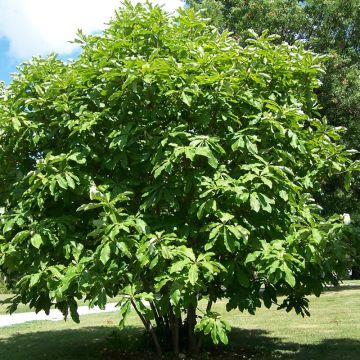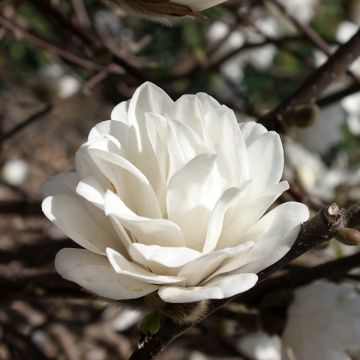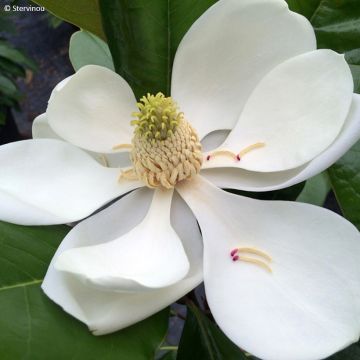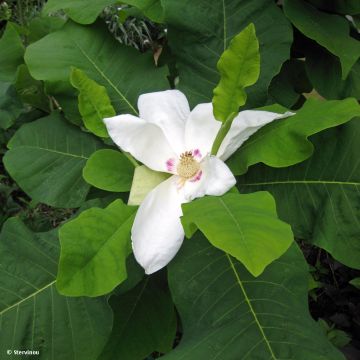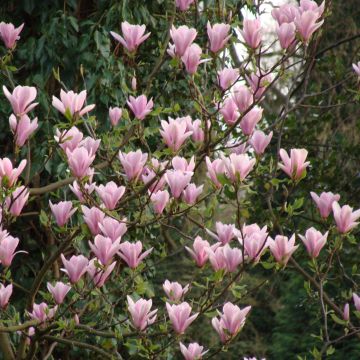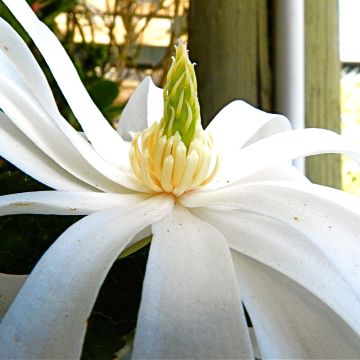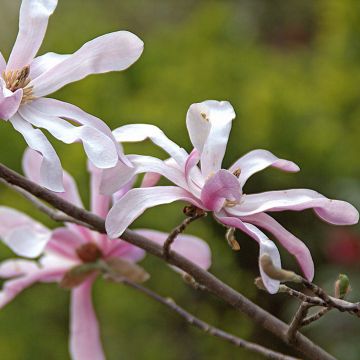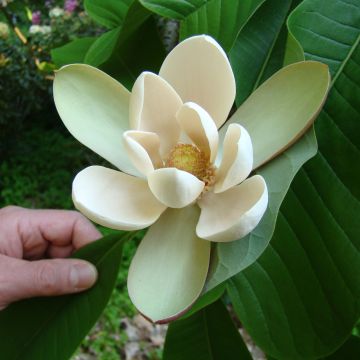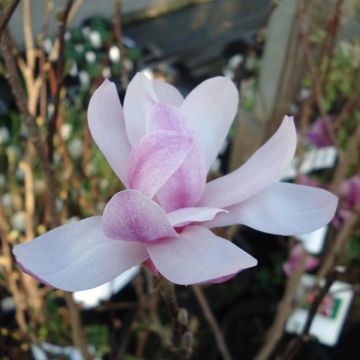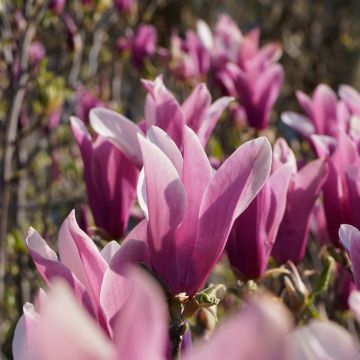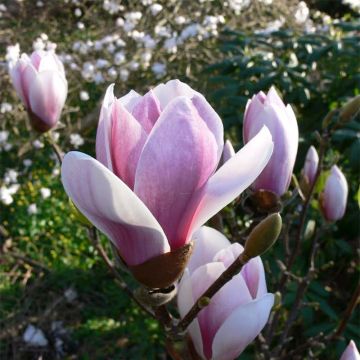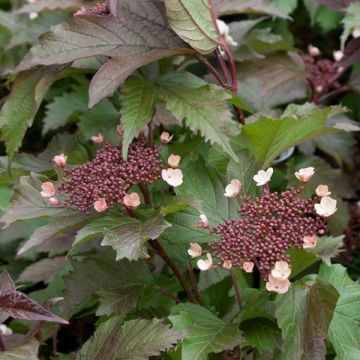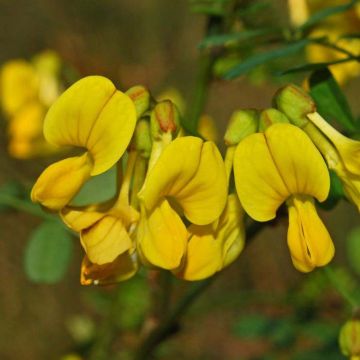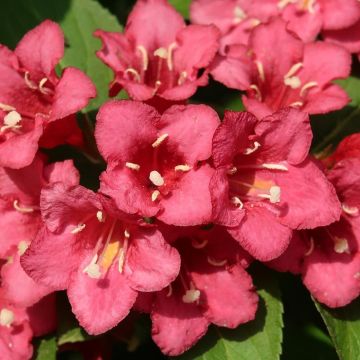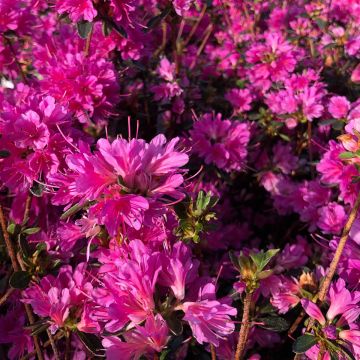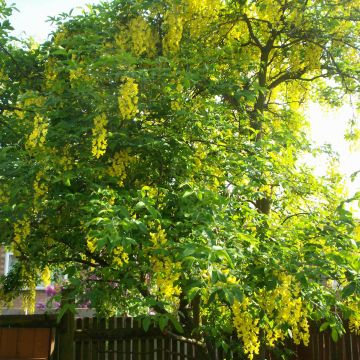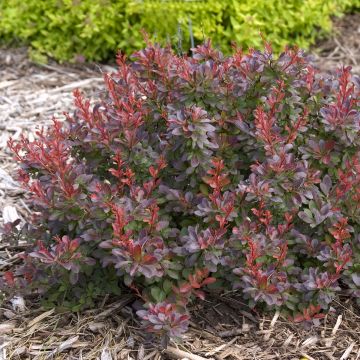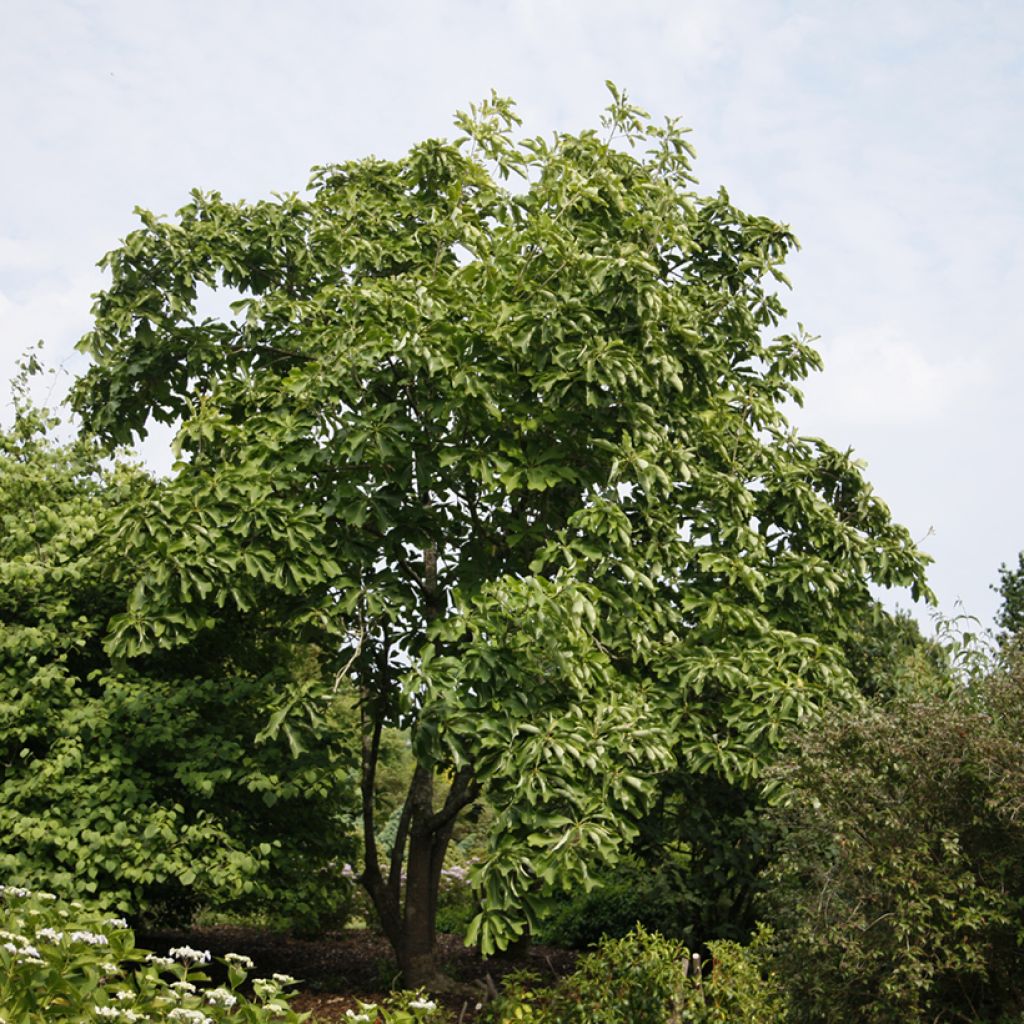

Magnolia officinalis
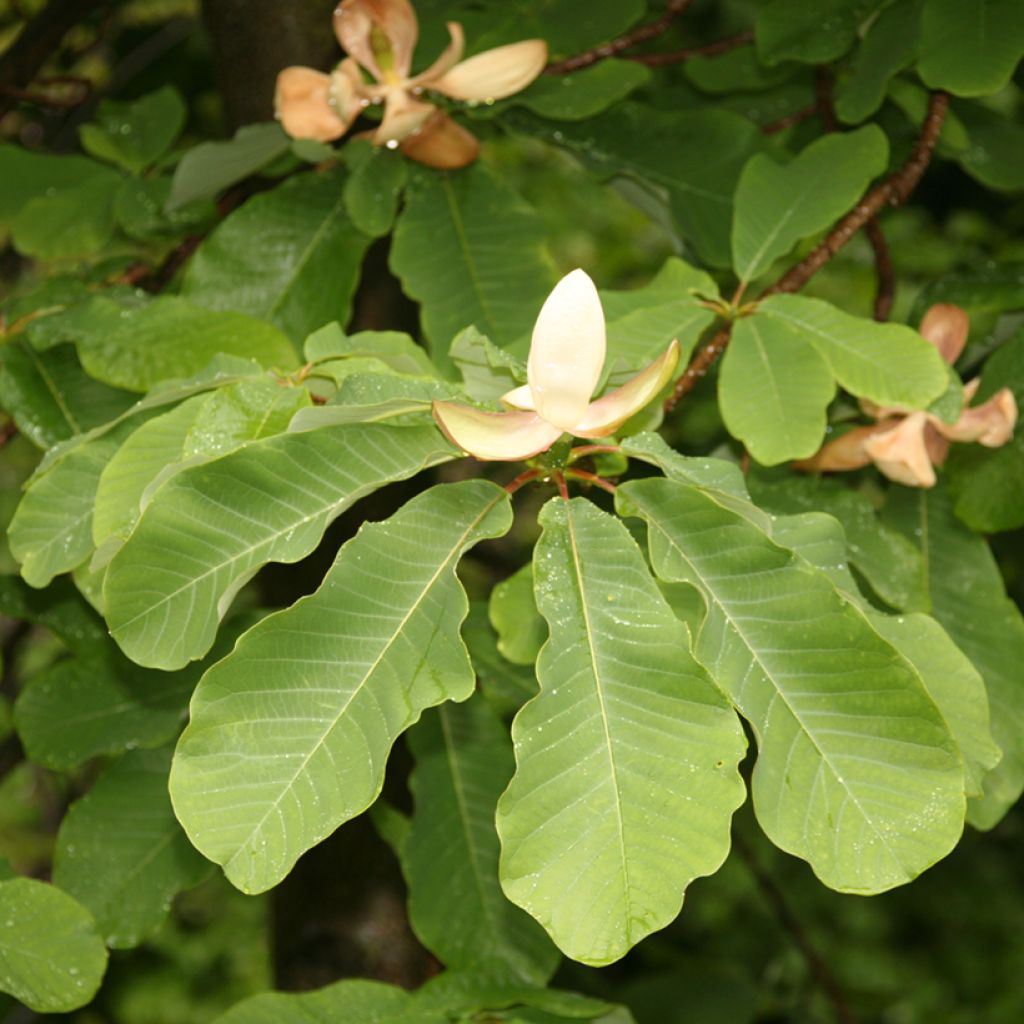

Magnolia officinalis
Magnolia officinalis
Magnolia officinalis
Houpo Magnolia, Chinese Magnolia
Why not try an alternative variety in stock?
View all →This plant carries a 24 months recovery warranty
More information
We guarantee the quality of our plants for a full growing cycle, and will replace at our expense any plant that fails to recover under normal climatic and planting conditions.
From €5.90 for pickup delivery and €6.90 for home delivery
Express home delivery from €8.90.
Oversize package: home delivery by special carrier from €6.90 per order..
Express home delivery from €8.90.
Delivery to Corse prohibited: UE law prohibits the import of this plant from mainland France to Corse as part of the fight against Xylella fastidiosa. Please accept our sincere apologies.
More information
Does this plant fit my garden?
Set up your Plantfit profile →
Description
Magnolia officinalis is a deciduous, impressive Chinese botanical species known for the size of its leaves and flowers. It forms a true small tree with leaves grouped in clusters at the ends of the branches. In late spring, very large flowers with a fragrant scent appear on a mature subject. It is not commonly planted in Western gardens but can be grown like a large rhododendron in deep and loose neutral to acidic soil that remains moist.
In the magnolia family, Magnolia officinalis is one of the most beautiful species. It is a robust and elegantly shaped small, deciduous, perfectly hardy tree, often with multiple stems, developing a regular and sparsely branched crown, conical overall and rounding with age. The officinalis subspecies, with its oval and entire leaves, differs from the biloba subspecies, which has leaves with two lobes at their blunt ends. Native to central China, it is highly valued in the country for its medicinal properties.
In our climates, Magnolia officinalis generally reaches a height of 8-10 m with a spread of 7-8 m. Its growth is quite rapid once it is well established. Its bark is brown to ash grey, thick and wrinkled, but does not crack with age. It becomes scaly at the base of the trunk on mature subjects. The young branches are smooth. In spring, the large buds open into wide, oval leaves measuring up to 50 cm in length and 25 cm in width. The upper surface of the blade is a tender green, strongly veined and slightly shiny. The leaves are arranged in clusters (whorls) at the ends of the branches. Flowering occurs from May to June, depending on the climate. The flowers, sometimes reaching 20 cm in diameter, consist of 9 to 12, white to cream-white petals. They have a pronounced and pleasant, fruity fragrance typical of magnolia flowers. After pollination, reddish pink fruits form, gathered in decorative cones measuring 10 to 13 cm in length. They contain red seeds. Before falling, the foliage takes on beautiful shades of brown to brick red.
Magnolia officinalis is suitable for planting in medium-sized gardens or parks, if the soil type and climate allow. It will be highlighted as a standalone specimen in the middle of a lawn, or at the back of a lower shrub bed. It pairs well with large Rhododendrons and Chinese Azaleas that thrive in similar conditions. Beautiful trees like Henry's Lime (Tilia henryana) will accompany it during its flowering. The Caramel Tree (Cercidiphyllum japonicum) or Hamamelis 'Yamina' will enhance its foliage with magnificent autumn colours.
Report an error about the product description
Plant habit
Flowering
Foliage
Botanical data
Magnolia
officinalis
Magnoliaceae
Houpo Magnolia, Chinese Magnolia
Magnolia officinalis var. officinalis
China
Other Magnolia
Planting and care
Magnolia officinalis prefers sunny to partially shaded exposures and requires deep, moist, rich, and humus-bearing soil without limestone. It is hardy down to -17°C. This species hates hot summers. Planting the Magnolia can be done in spring or autumn, outside the frost period. Prepare a hole 80 cm wide and as deep with a good supply of ericaceous soil and compost if your soil tends to be clayey and slightly calcareous. Be careful when placing it in the hole, as the roots are fleshy but quite fragile. Immediate watering with non-limestone water (rainwater) helps to compact the soil around the roots. During the first year of planting, the Magnolia requires watering once a week. It will appreciate feeding once a year in spring. Since the Magnolia does not like prolonged drought, the soil should remain moist (but not waterlogged) throughout the summer. It is a good idea to mulch the base to keep it moist during the hot season, enrich the soil, and protect it from the cold in winter. Due to its fragile roots, avoid transplanting it. The only enemies of the Magnolia are pests such as scale insects, snails, and slugs that attack young plants, as well as fungal diseases such as root rot (in overly waterlogged soil) and coral disease.
Planting period
Intended location
Care
This item has not been reviewed yet - be the first to leave a review about it.
Spring-flowering shrubs
Haven't found what you were looking for?
Hardiness is the lowest winter temperature a plant can endure without suffering serious damage or even dying. However, hardiness is affected by location (a sheltered area, such as a patio), protection (winter cover) and soil type (hardiness is improved by well-drained soil).

Photo Sharing Terms & Conditions
In order to encourage gardeners to interact and share their experiences, Promesse de fleurs offers various media enabling content to be uploaded onto its Site - in particular via the ‘Photo sharing’ module.
The User agrees to refrain from:
- Posting any content that is illegal, prejudicial, insulting, racist, inciteful to hatred, revisionist, contrary to public decency, that infringes on privacy or on the privacy rights of third parties, in particular the publicity rights of persons and goods, intellectual property rights, or the right to privacy.
- Submitting content on behalf of a third party;
- Impersonate the identity of a third party and/or publish any personal information about a third party;
In general, the User undertakes to refrain from any unethical behaviour.
All Content (in particular text, comments, files, images, photos, videos, creative works, etc.), which may be subject to property or intellectual property rights, image or other private rights, shall remain the property of the User, subject to the limited rights granted by the terms of the licence granted by Promesse de fleurs as stated below. Users are at liberty to publish or not to publish such Content on the Site, notably via the ‘Photo Sharing’ facility, and accept that this Content shall be made public and freely accessible, notably on the Internet.
Users further acknowledge, undertake to have ,and guarantee that they hold all necessary rights and permissions to publish such material on the Site, in particular with regard to the legislation in force pertaining to any privacy, property, intellectual property, image, or contractual rights, or rights of any other nature. By publishing such Content on the Site, Users acknowledge accepting full liability as publishers of the Content within the meaning of the law, and grant Promesse de fleurs, free of charge, an inclusive, worldwide licence for the said Content for the entire duration of its publication, including all reproduction, representation, up/downloading, displaying, performing, transmission, and storage rights.
Users also grant permission for their name to be linked to the Content and accept that this link may not always be made available.
By engaging in posting material, Users consent to their Content becoming automatically accessible on the Internet, in particular on other sites and/or blogs and/or web pages of the Promesse de fleurs site, including in particular social pages and the Promesse de fleurs catalogue.
Users may secure the removal of entrusted content free of charge by issuing a simple request via our contact form.
The flowering period indicated on our website applies to countries and regions located in USDA zone 8 (France, the United Kingdom, Ireland, the Netherlands, etc.)
It will vary according to where you live:
- In zones 9 to 10 (Italy, Spain, Greece, etc.), flowering will occur about 2 to 4 weeks earlier.
- In zones 6 to 7 (Germany, Poland, Slovenia, and lower mountainous regions), flowering will be delayed by 2 to 3 weeks.
- In zone 5 (Central Europe, Scandinavia), blooming will be delayed by 3 to 5 weeks.
In temperate climates, pruning of spring-flowering shrubs (forsythia, spireas, etc.) should be done just after flowering.
Pruning of summer-flowering shrubs (Indian Lilac, Perovskia, etc.) can be done in winter or spring.
In cold regions as well as with frost-sensitive plants, avoid pruning too early when severe frosts may still occur.
The planting period indicated on our website applies to countries and regions located in USDA zone 8 (France, United Kingdom, Ireland, Netherlands).
It will vary according to where you live:
- In Mediterranean zones (Marseille, Madrid, Milan, etc.), autumn and winter are the best planting periods.
- In continental zones (Strasbourg, Munich, Vienna, etc.), delay planting by 2 to 3 weeks in spring and bring it forward by 2 to 4 weeks in autumn.
- In mountainous regions (the Alps, Pyrenees, Carpathians, etc.), it is best to plant in late spring (May-June) or late summer (August-September).
The harvesting period indicated on our website applies to countries and regions in USDA zone 8 (France, England, Ireland, the Netherlands).
In colder areas (Scandinavia, Poland, Austria...) fruit and vegetable harvests are likely to be delayed by 3-4 weeks.
In warmer areas (Italy, Spain, Greece, etc.), harvesting will probably take place earlier, depending on weather conditions.
The sowing periods indicated on our website apply to countries and regions within USDA Zone 8 (France, UK, Ireland, Netherlands).
In colder areas (Scandinavia, Poland, Austria...), delay any outdoor sowing by 3-4 weeks, or sow under glass.
In warmer climes (Italy, Spain, Greece, etc.), bring outdoor sowing forward by a few weeks.

































